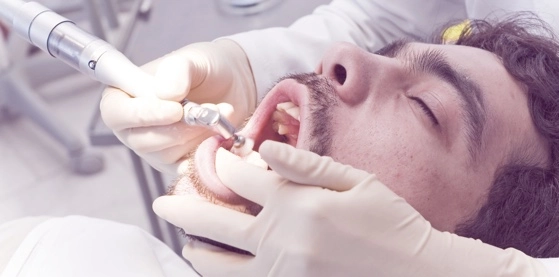Don’t let fear hinder you from achieving a healthy, beautiful smile. For those who prefer to avoid the dentist, Greenspoint Dental offers a way to escape your dental anxieties. We provide a calming, soothing way for you to visit our offices, through sedation dentistry.
If you’re looking for a trusted full sedation dentist near you in Houston, look no further than Greenspoint Dental and experience a painless dental procedure.
Sedation dentistry, also called relaxation dentistry, is the perfect way for dentists to control tooth pain and unease during dental appointments through many unique methods. The ideal candidate for sedation dentistry is anyone who has fears and anxiety about dental treatment, has procrastinated making a dentist appointment because of dental phobias, and wants treatment completed in one day.

Types of Sedation Dentistry
Nitrous Oxide/Laughing Gas
This is the most common sedation practice and has been used by dentists for many years. The patient has normal bodily functions during the procedure. It works best for mild to moderate anxiety and has a rapid onset. It can be used for any appointment length and can be altered quickly if more sedation is needed.
Oral Sedation
This is given in a pill form. Your body functions remain stable, and you are able to breathe on your own and usually feel like you fall asleep. There is only some memory of the procedure. This option works well for most people and is safe and easy to monitor.
IV Sedation
This sedation is also known as deep conscious sedation. The medications are given straight into the bloodstream. The drugs used in IV sedation by our clinic in Houston are more effective than drugs taken orally. This type of sedation erases most memories of the procedure, and it feels like you slept through it.
There are many advantages to “sleep dentistry”:
- Helps you maintain great oral hygiene since you aren’t afraid to get dental treatments.
- Procedures that may take hours feel like only a few minutes.
- Stay awake during the treatment, but feel so comfortable and peaceful you don’t remember it.
- Sedation dentistry is extremely safe since you are monitored the entire time by skilled dental professionals.
- You can feel relaxed for five to six hours after the sedation, depending on which is used.
- Depending on the sedation, you may not be able to drive yourself home. Make sure you have someone who can take you home, so you can rest until you are fully alert.
- People who have difficulty going numb will not have any issues with sedation dentistry.We at Greenspoint Dental in Houston, offer different kinds of sedation dentistry, depending on your dental needs. Give us a call at (281) 823-9987.
Schedule an Appointment with us